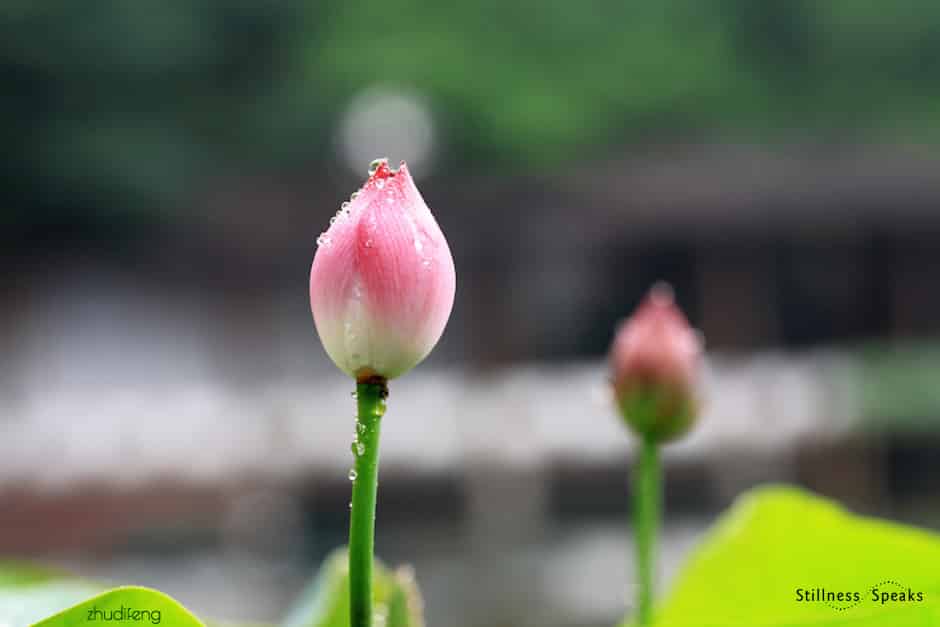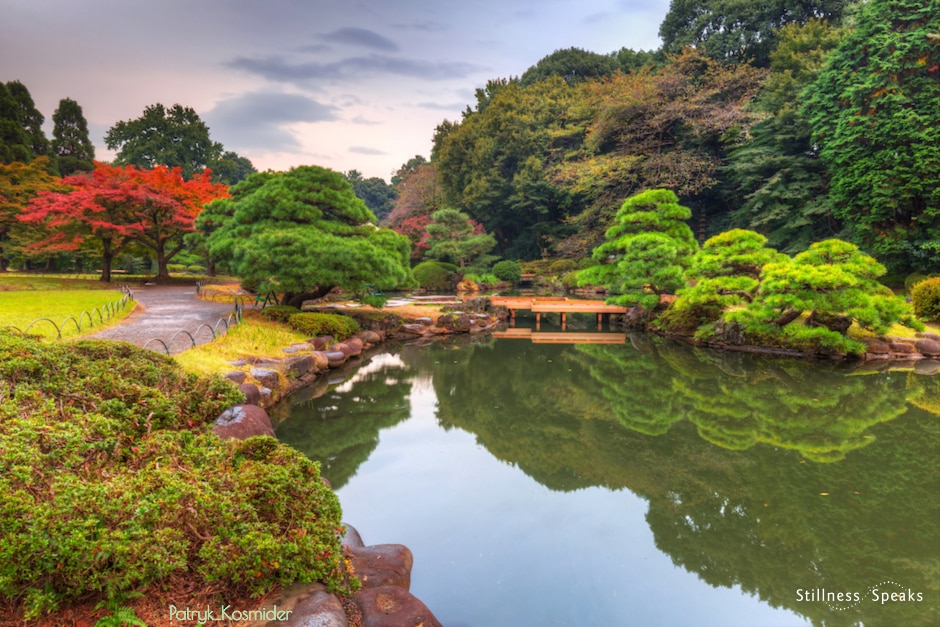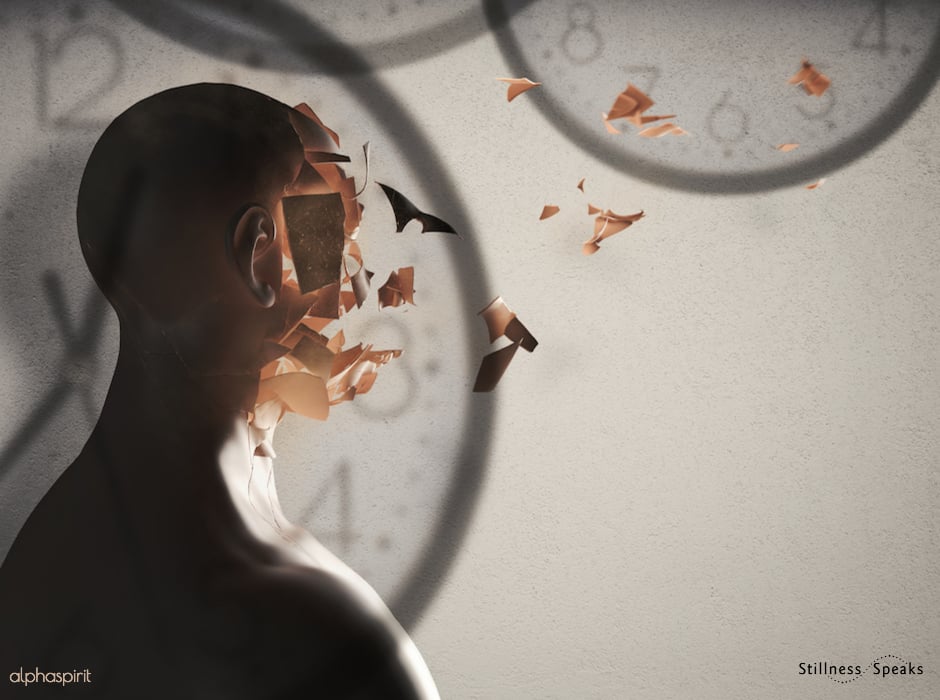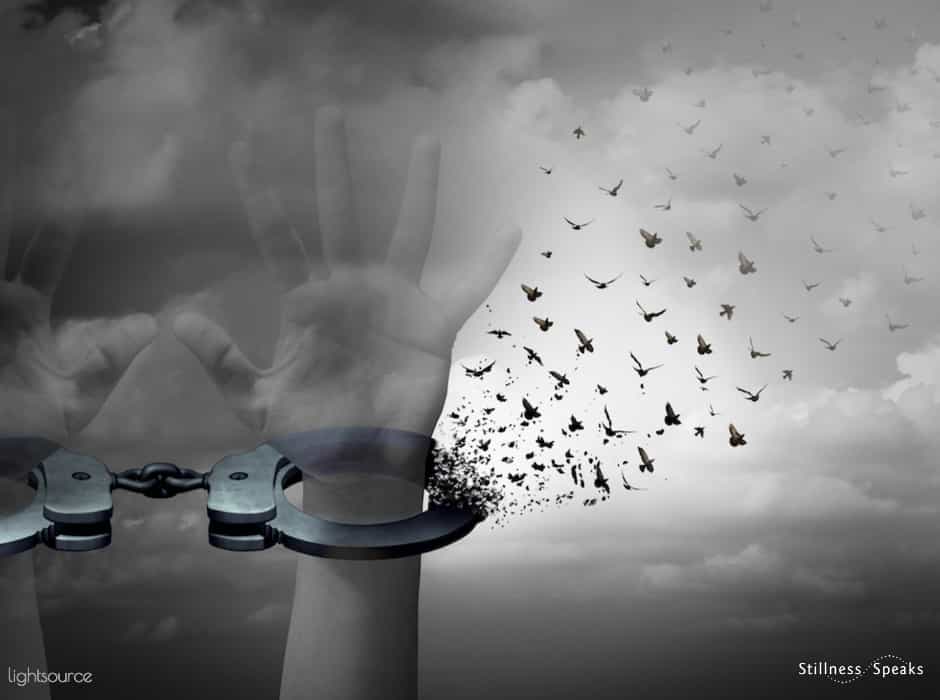Spiritual Maturity: “… When you let the suffering penetrate you all the way … this is grace. Grace is not some state that elevates you above the human experience. It is simply the absence of resistance to what is here … … the only salvation is here and now. No escape, just this. Just this unadulterated presence and unwavering openness …” ~ Amoda Maa
Since the COVID crisis began we’ve been focusing on qualities that bring humanity together, e.g. kindness, compassion, love, and more … today we consider the foundation out of which these qualities emerge: spiritual maturity …
But … before we dig into this topic … it is important highlight some ongoing heroic efforts that continue to ensure our health and safety in the midst of the pandemic: Go Fund Me has organized various campaigns targeted towards the COVID-19 relief efforts. All of these campaigns are worthy of our attention … but for now we want to highlight TWO critical ones that we are supporting personally and also as Stillness Speaks (through donations):
We are all facing financial challenges but IF your situation allows you to donate and help then …
… please visit Frontline Responders Fund’s Go Fund Me page … and help deliver crucial supplies to these frontline responders …
… and/or visit America’s Food Fund Go Fund Me page and help feed the neighbors in need.
And, we again, express our deepest gratitude to a) the COVID-19 Frontline Responders (all the healthcare professionals – doctors, nurses, hospital/medical-services staff – firefighters, law enforcement, volunteers, and any/all the people involved in keeping the “system-at-large” functioning for ALL of us) … and b) Go Fund Me for organizing America’s Food Fund to feed the needy.
THANK YOU – our lives would not be possible without your dedication.
So, back to Spiritual Maturity … what is it? … Amoda’s opening quote – excerpted from a post on her website – suggests an answer … and she offers a deeper dive into this topic in her most recent book, Embodied Enlightenment: Living Your Awakening In Every Moment through a full chapter on this topic titled: Spiritual Maturity And The Three Stages of Awakening …
This post is the continuation of a multi-part series that’s exploring “… authentic embodiment of awakened consciousness …” through excerpts from Amoda’s book on “… that which is deeper than surface reality …”
… in part 1, we considered excerpts from the chapter titled: The Body as A Gateway To Liberation… where she reminds us that we are “literally made of light” and then goes on to explore the role of “light in awakening” …
In this part 2, we look at excerpts from the chapter Spiritual Maturity And The Three Stages of Awakening … that’s about “… the maturation of awakening …” which is a crucial issue faced by all on the self realization journey. Amoda aptly suggests that “… It’s the maturation part that is so relevant to the complexity of our modern-day culture and psyche. Most often, there is confusion around what this maturation looks like and what it means to actually live an awakened life …” … she also talks about true compassion, forgiveness, and love in action … qualities that emerge as spiritual maturity develops and deepens …
All italicized text below is from Amoda’s book and is published here with her gracious permission. She has also generously offered a free downloadable PDF of the Table of Contents (link at the bottom of this post … along with more information about her) … Click here for her current events.
SPIRITUAL MATURITY AND THE THREE STAGES OF AWAKENING
Awakening is the initial recognition of that which is awake in you. It’s the moment when you wake up out of the slumber of mistaken identity and open your eyes to the light of your essential nature. The maturation of awakening is like the process of a tiny bud becoming a flower. Only a flower in full bloom can fulfill its divine destiny by revealing the beauty of its true colors and by releasing the intoxication of its fragrance. The flower is neither trying to give anything nor trying to get anything and yet its beauty and fragrance are freely available; it is simply being itself. In full embodiment of awakening, that which moves through you as “your life” will be given in service to the awakeness inherent in all things. Just like the flower, you have no choice; you are simply being yourself. There is no division here; no trying to give anything or get anything. It is the heart of you meeting the heart of what is.
The outermost expression of this maturation is unique to you. Just as every flower has a unique shape and color, the life of each awakened individual has an utterly unique appearance. For some it is expressed more outwardly; for example, through the inspiration to build an ethical business, the desire to offer a service through work within a community or organization, the impulse to support others on their personal journey (perhaps by being a therapist, life-coach, or a spiritual teacher), or through the expression of creative arts. For others it is more of an inward expression; for example, through a contemplative life of living in a spiritual community, gardening, writing poetry, or simply by being very present while making a cup of tea or walking the dog. Either way, outward or inward, what you do is in service to the truth of reality rather than to the egoic need for self-comfort or self-importance. Initially, it is very likely that the pull is further inward into stillness and solitude. But as time progresses, that which moves through you is likely to draw you back into the world, where you can better serve the illumination of all beings.
This maturation process is of particular relevance to today’s spiritual seeker living an ordinary life, because it can only take place in the cauldron of everyday human interactions. The messy world of taking care of the body’s needs, relationships, raising a family, and working is where the jewel of awakeness is polished. But this is not really news, because ancient spiritual texts, such as those that arose out of the philosophies of yoga, Vedanta, and tantra, also talk about three stages of awakening that point to the same process. Each so-called “stage” offers a useful signpost as to where we might be stuck or deluding ourselves that we have arrived at the holy grail of enlightenment.
The first stage comes with a radical shift in perception: the world of form is seen to be impermanent and therefore without real substance. This razor-sharp cognition of the illusory nature of that which we previously assumed to be solid or stable is a shock to the mind. In a traditional spiritual context, this realization would most often result from rigorous meditative practice. Today, psychedelics, psychological stress, deep grief, loss or pain, or even just being still in the presence of extreme beauty in nature can all be catalysts for shaking us out of the prison of ego’s way of seeing things.
Initially, this is experienced as “the high of liberation,” a state of bliss, oneness, or intense joy. This may last for just a few minutes, a few days, or even several months. As previously unchallenged assumptions about reality come tumbling down, there is often an accompanying degree of disillusionment. As the world and normal life come back into view, they can appear to be meaningless, and confusion, insecurity, despair, and fear are common responses. While the truth in you rejoices that a deeper reality has been glimpsed, the ego is threatened by this new perspective and scrambles to make sense of it. In the attempt to hold on to an idea of safety, security, or sanity, there is a reidentification with an archaic sense of self, based on solid form.
This split between true seeing and egoic perception perpetuates a discomfort, a sense that things are not quite right. Awakening seems to have happened and yet there is still not an abiding sense of peace. Surely something is missing from the whole picture. What follows is usually an attempt to recapture the high of liberation by looking for the right method, knowledge, or teacher. In this case, the ego is still trying to “do something” to achieve a permanent awakened state.
If this attempt to hold onto awakening is recognized as erroneous, there is likely to be a deeper seeing (traditionally called the second stage). This is a revelation of the luminosity that remains when everything falls apart, an undeniable awareness of enduring emptiness as the ground of reality. Although there is the possibility of deep rest here, there’s also a strong tendency to get stuck here. Identification with eternal stillness is very tempting. For where there is no movement, there cannot be any suffering, and this is very appealing to the ego, which wants to avoid meeting pain. An example of this is when someone at one of my retreats dramatically stormed out of a talk because I spoke of the capacity to meet personal suffering, as well as the suffering of the world, as a doorway to the unbounded compassion that comes with authentic awakening. In his eyes, suffering was an absolute illusion and therefore not worthy of inquiry. While not always as extreme as this, this example is a common reaction at this stage.
In some ways, this retreat participant was right: suffering is indeed an illusion at the absolute level. But it’s not the whole picture. Fixating on emptiness creates another division. And where there is division, however subtle, there cannot be full awakening. It’s a spiritually rigid viewpoint that denies being wholeheartedly touched by life—an avoidance of the blood, sweat, and tears that are an inevitable part of the human experience. It’s almost as if there is a fear that being human will get in the way of the ultimate transcendent state. Unfortunately, this stance leads to another veil: spiritual arrogance, superiority, and righteousness.
The wholeness of full awakening is described by what is often called the third and final stage. (Remember, these stages are really just signposts, not necessarily linear stages.) The final stage is the recognition that relative and absolute reality are one. Here, the witness and that which is being witnessed— both the subject and the object—collapse into each other. You are both the emptiness of being and the fullness of the world, and there is no division or contradiction; there is just the beautiful paradox of nondual awareness. A whole new dimension of spiritual maturity opens up to us at this level of awareness. Here, nothing is excluded, as everything, both dark and light, both form and formless, both mundane and transcendent, is seen to be an expression of oneness, and so nothing is avoided, denied, or feared. Even suffering itself is deeply embraced.
When full maturity has blossomed, the flower that bursts forth and opens into the light has to return to the darkness of the earth, thus fulfilling its divine destiny. You too are destined to return to the shady world of form after awakening to your inner light. It’s the way of reality … and your denial or avoidance of it does not make it any less real.
Next in this chapter (Spiritual Maturity And The Three Stages of Awakening) Amoda talks about Compassion: The Heart of Reality where she shares her thoughts on true compassion … and reminds us that as spiritual maturity deepens it also “sows the seeds of compassion” … this segment is not part of this post except to highlight some quotes:
“… The return of awakeness from the lofty heights of the absolute perspective to the nitty gritty of the earthly experience sows the seeds of compassion. If you are fully awake and fully human, you will inevitably see that suffering is integral to the movement of life. … Buddha’s declaration that “life is suffering.” Compassion cannot reveal itself without an unconditional understanding and acceptance of this truth …”
“… Compassion isn’t about “doing good things.” It’s got nothing to do with charity or pity. It’s got everything to do with something so much more radical and far-reaching than this: it’s the recognition of compassion as the heart of reality …”
“… In this willingness to unconditionally welcome every single thing in the field of your experience, you become a bodhisattva, dedicated to the illumination of all beings, one drop at a time. It’s a choiceless choice …”
And another key behavioral outcome of spiritual maturity is forgiveness …
THE POWER OF FORGIVENESS
The choice to meet suffering consciously, and then to open wider than this suffering, is the act of forgiveness. Very often there’s an idea that forgiveness is something you do, perhaps a kind gesture, the writing of a “letter of forgiveness” to everyone who’s ever hurt you, or a turning of the other cheek. But the action is really an inner one. It’s the choice to open wider than you want to, wider than you can even imagine.
Sometimes, you can really believe that you’re choosing to meet suffering consciously and yet somehow you’re still a victim of this suffering. For example, when you’re in the grip of a dark emotion and you feel it intensely, you think you’re meeting it completely, yet it doesn’t dissolve. The pain is like a rock; it just stays there. In this case, there’s still a subtle refusal to let go of the victim story. To open wider than the suffering is to be willing for the victim to die. As much as you say you no longer want to be a victim, the death of this victim is synonymous with the death of self, because victim-identity is a primary part of the ego’s scaffolding. The question to be faced here is this: “Who would you be without the victim?” This isn’t to be replaced with another idea of self, not even a positive self! The question is one that functions to take you deeper into the core of being where there is no self, but only if you are willing for the structures that uphold your sense of self to come tumbling down.
Of course, when trauma runs deep, if you’ve been physically or emotionally abused by someone in your family, a stranger, or by a collective force (such as the Holocaust or political exile), it’s difficult to forgive. After all, the abuse did take place and you were indeed a victim of someone else’s violence, hatred, or insanity. Letting go of the victim story is certainly not about condoning injustice or cruelty; it’s not about making a wrong right. It’s really not about the “other,” but about you. Holding on to “it shouldn’t have happened” perpetuates a grievance. This creates an energetic contraction that freezes your life force, locks it into the past, and prevents full engagement with life now. One of the primary handicaps of trauma is the inability to “cope” with situations that invoke strong emotions. There’s often a withdrawal from the deeper current of life, a closing down of the feeling-nature that shows up as an inability to be intimate (either emotionally or sexually), and a very high sensitivity to the stress of new situations, unexpected events, and loss. But even though this self-protective pattern continues way past the original event, it is possible for the energetic knot of trauma to be released.
Through having the courage to face what deeply hurts and “sitting inside it” without judgment, there is a dissolution of the grievance. It’s precisely this “sitting inside the experience” that was not possible when the traumatic event originally happened. The resistance to the horror and pain of the original event created a kind of splitting off of consciousness as a form of protection, and then the overlay of a story that says, “This shouldn’t be happening.”
Forgiveness is, first and foremost, an inner journey. It’s about you. Are you willing to put an end to your inner conflict? Are you willing to meet the violence, hatred, cruelty, injustice, unkindness, greed, and ignorance in you? Are you willing to see that each of us is capable of dark feelings? These feelings may or may not be acted on, but the point is that we are each capable of experiencing these feelings. Forgiveness is the natural outcome of letting go of inner conflict. It begins with taking responsibility for your inner experience rather than continuing to avoid the pain by throwing it outward through blame and retaliation.
The power of forgiveness is poignantly encapsulated in The Railway Man, the autobiographical story of Eric Lomax, a prisoner of war in World War II who suffered brutal torture at the hands of the Japanese. This experience left deeply buried emotional scars in his psyche that created havoc in his personal life. Many years later, after uncovering in himself a desire for revenge, he set out to kill his former tormentor. But in meeting him and pouring out his story of pain and hatred, he saw at the same time the humanity within his tormentor and the inhumanity within himself. As his heart opened, his inner reality was transformed and a tender friendship developed between the two men that lasted until they both passed away in old age.
At the core of every human being is a desire for love and wholeness: all acts of terror and horror are misguided attempts to find this. When you are the one who has been hurt by these terrorizing and horrifying acts, it may seem like it’s impossible to believe this. Each one of us is called to dig much deeper into our inner knowing, to see that when the desire for love and wholeness moves through a form that has also suffered and been damaged, it comes out in distorted ways. At the root of this distortion is an ignorance of true nature and a consequent acting from a belief in separation. From this belief, all fear, hatred, violence in the name of justice, and other endless harmful acts are inevitable. Seeing that ignorance is the root cause of all suffering opens our hearts. We see but do not judge; we see without a story. This is the essence of compassion, redemption, and resurrection. As Jesus said as he was dying on the cross: “Forgive them Father for they know not what they do.”
An open heart allows the forgiveness of others, the world, life, God, and of the self. In choosing to open to the mystery of this moment with all its horror, you, as a separate self, die in this moment as it is, and what is revealed is the unending glory of an inner power. Forgiveness has the power to heal, for your sake and for the sake of the world. It’s a power that defies all opposition. And it’s more potent than any action.
Amoda concludes the chapter Spiritual Maturity And The Three Stages of Awakening by examining Love in Action – yet another behavioral outcome of spiritual maturity … this segment is not part of this post but we offer some quotes that give an insight into Amoda’s thoughts on this critical behavior that stems from spiritual maturity:
“… there is nothing fluffy about real love, and it certainly doesn’t conform to any of our ideas of how love should feel or behave. … Real love is radical. It is gentle yet fierce, tenacious yet self- less, unconditional yet uncompromising …”
“… There is no experience on the earthly dimension that this love does not embrace. This love loves everything. This love loves this moment exactly as it is. This love loves the human experience. It loves the multitextured tapestry of life …”
“… Love in action has no vestige of self-investment in it. Rather, it’s an action that serves the wholeness of life …”
“… Love in action is a movement that rises up out of the stillness of being. It has no agenda of pleasure or comfort-seeking, nor of pain aversion. Neither does it have an agenda of what the outcome of this movement should look like. Love simply moves, because movement is its nature …”
~ Amoda Maa
Stay tuned for … the concluding part of this series … where we will share excerpts from chapter 8: Love and Enlightened Relationship …
And, may you remain safe and healthy as you navigate this global crisis …
And may the insights offered here bring about ever deepening spiritual maturity in your own journey …
All italicized text above is from Embodied Enlightenment: Living Your Awakening In Every Moment … by Amoda Maa and is published here with her generous and gracious permission. Click here for the free, downloadable PDF of the Table of Contents.
Amoda’s Stillness Speaks Teacher Page will be coming in the future … please visit Part 1 of this series for her brief BIO including her website … and click here for her current events.
















Reading this article reminds me of the diamond approach, how the many fac
ets of our human nature have to be polished to allow the brilliance of the fire of the light to come through.